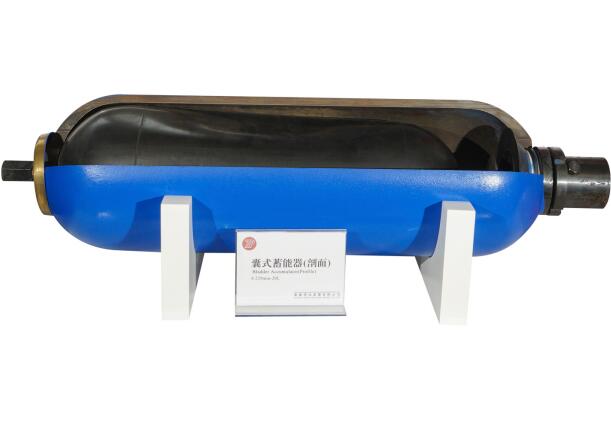The accumulator is an energy storage device that can store hydraulic energy in a pressure resistant container and release it when needed. The accumulator is an important accessory in the hydraulic system, which plays an important role in ensuring the normal operation of the system, improving the dynamic quality of its products, maintaining the stability of work, extending the working life, reducing noise, etc. The accumulator brings obvious effects on economy, energy conservation, safety, reliability and environmental protection to the system. In modern large-scale hydraulic systems, especially those with intermittent working conditions, it is especially worth popularizing.

Working principle of accumulator
Hydraulic oil is an incompressible liquid, so it is impossible to accumulate pressure energy by using hydraulic oil. It must rely on other media to convert and store pressure energy. For example, the bladder type inflatable accumulator developed by using the compressibility of gas (oxygen) is a device for storing hydraulic oil. The bladder type accumulator is composed of an oil part and a gas part with gas seals. The oil around the bladder is connected with the oil circuit. When the pressure rises, the oil enters the accumulator, the gas is compressed, and the system pipeline pressure will not rise any more; When the pipeline pressure drops, the compressed air expands and the oil is forced into the circuit, thus slowing down the pipeline pressure drop.
Accumulators have various types and complex functions. Different hydraulic systems have different requirements for the functions of accumulators. Only by clearly understanding and mastering the types and functions of accumulators, can we correctly select accumulators according to different working conditions, so that they can play a full role and achieve the goal of improving system performance.